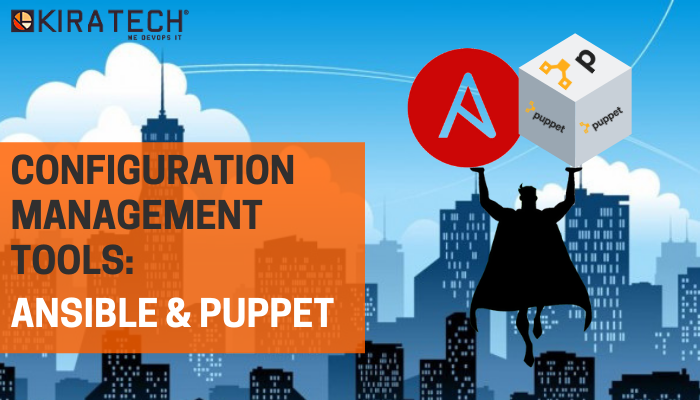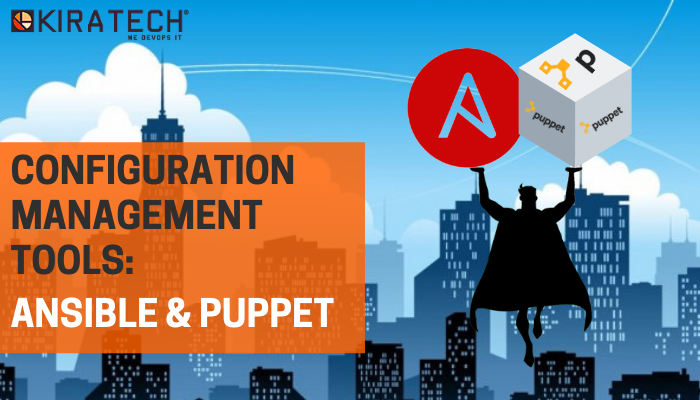
The main companies’ goal is to constantly increase the customer satisfaction through the production and delivery of immediately usable software thanks to which continuous releases and features are possible.
One of the favourite practices to help the development team to achieve this purpose is the Configuration Management one, strictly connected to the DevOps methodology. Let’s analyse what is it for and which are the best tools to implement it.
What is the Configuration Management?
It is a set of practices which aim is to manage the IT system configuration automatically, identifying, maintaining and verifying all the scripts and configuration files versions used for the infrastructure management.
It allows the management of complex systems in a controlled and reproducible way. It is based on the storage, on the file or on the database, of the controlled equipment.
This practice helps people working on complex IT environment, in which even the simplest operations need a long time to be done. Velocity, simplicity and limits exceeding are the keywords imposed by the standard tools and by the methodology.
This automation process is a real DevOps enabler and can be integrated with other solutions concerning the collaborative development, as GitHub, and the Continuous Integration & Delivery process, as Cloudbees Jenkins.
We suggest Ansible, belonging to the big Red Hat family, and Puppet as the best Configuration Management software.
Ansible for DevOps: manage your systems and remove complexities
Ansible is an open source Configuration Management tool that helps to realize and simplify the IT automation process, by providing a strategic and efficient time management to the development and operation teams.
Advantages
- It is easy to learn. There is a short technical sheet to read and after few minutes you are ready to start working on the software.
- It works agentless. Ansible doesn’t need any agent to install configurations on a server and it uses the SSH protocol.
- It is modular because it allows the tool extension according to the needs, thanks to its modules that can be written with every programming language.
- It can dialogue with already existent systems, applications and tools and it can also reduce the environment and the processes complexity.
- It is easy to integrate and makes the collaboration between the network, development, infrastructure, application and security teams easier.
- Thanks to the Configuration as a Code paradigm, in case of errors, it is easy to restore the previews system configuration, if it is used together with a version’s control system (as GitHub Enterprise).
The Enterprise Ansible Version is Ansible Tower by Red Hat which is the best way to use Ansible in the company’s systems. The IT experts can run the automation process by centralising and controlling the whole infrastructure through a user interface, the control accesses based on the role, the processes planification and the graphic management.
Puppet Enterprise: the shortest way for a better software
Puppet Enterprise is the other solution for a centralized and automatic IT infrastructure suggested by Kiratech. It makes every software development step automatic, from the virtual and physical machines provisioning to the configuration and reporting process; from the first code development phase to the testing one, the product release and the following updates. In this way, teams can work together and simultaneously, developing software according to the DevOps methodology (If you want to learn more about the DevOps methodology you can download our free guide).
Advantages
- Reliability, it simplifies the configuration management process
- Scalability: Puppet is often used to manage thousands of nodes
- Security, it ensures strength and reliability in the complex systems management thanks to its orchestration, visual workflows and automatic corrections. In addition, there is a 24/7 support.
“All companies would like to ensure velocity and stability simultaneously.
Puppet will help with this,
to realise and configure standard system as fast as possible.”
Are you spending most of your time correcting errors instead of creating code? These configuration management tools will help you to manage your infrastructure in a completely new way: remove manual works and reduce errors with the IT automation!
The configuration management practice is only a smart part of the whole DevOps methodology. If you want to learn more about the DevOps tools, download our free guide:








